Good morning everyone and welcome back to the Mirror Gallery. Ravnica Allegiance has been officially pre-released and drops everywhere tomorrow, ushering in another new chapter of the Ravnica story that has been unfolding over the last decade and a half. Picking up where Guilds of Ravnica left off, this set features the other five guilds: the Azorius Senate, the Gruul Clans, the Orzhov Syndicate, the Cult of Rakdos, and Simic Combine. While each has a part to play as the Bolas story arc nears completion, it would seem the Azorius Senate is more involved than ever before.
While I will always be a member of the Izzet League at heart, the Azorius have recently piqued my interest, and our exploration today takes a close look at their Parun and once powerful founder, Azor.
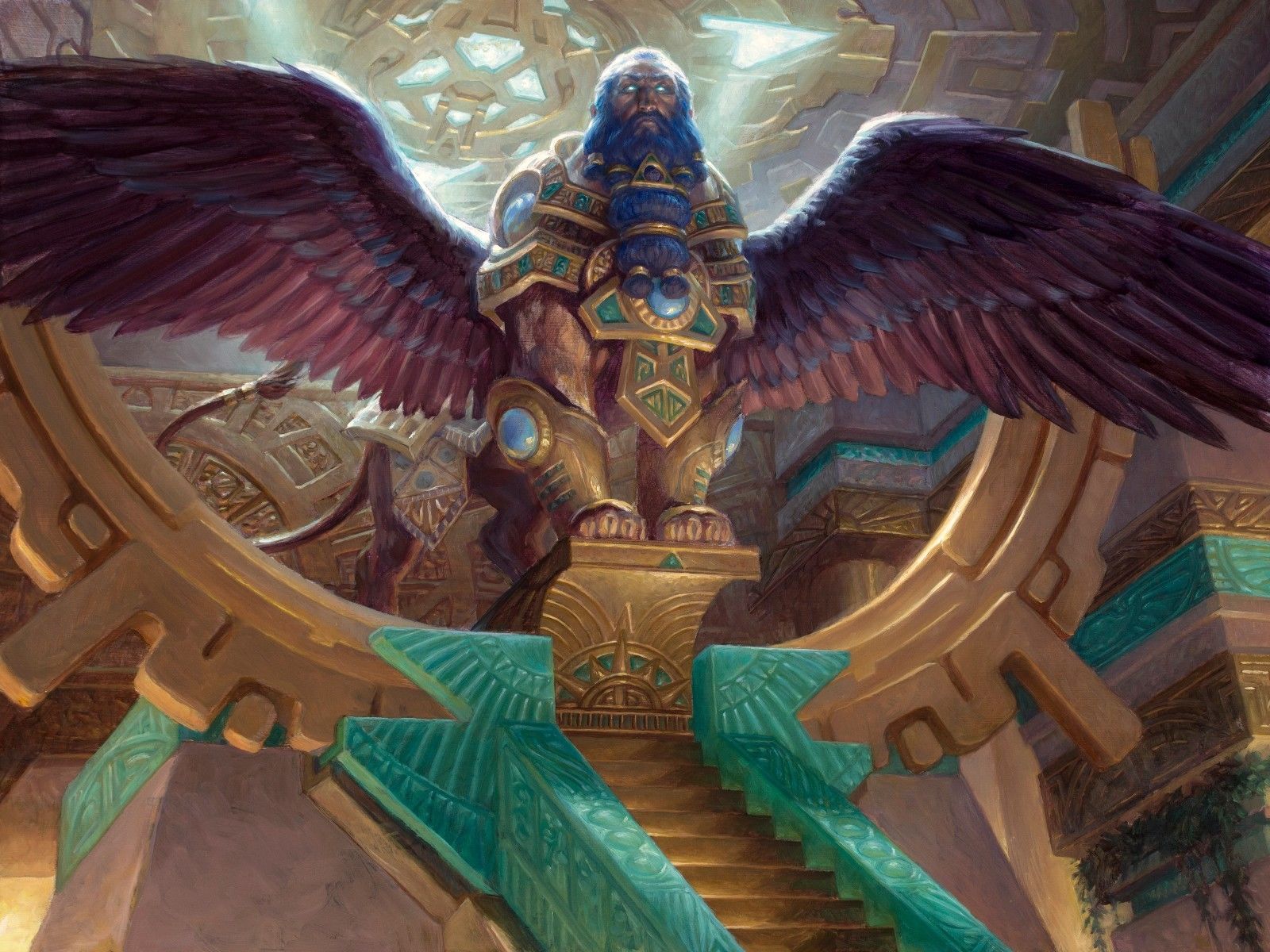
Though Azor is a native to Ravnica and is the namesake of the Azorius guild, we first met him on Ixalan, having been trapped there after giving up his spark to aid Ugin’s struggle against Bolas. His first and only card (so far) was printed in Rivals of Ixalan and illustrated by the one and only Ryan Pancoast. The final painting was beyond my collecting budget, but I was able to acquire a color study for both the legend as well as the throne on which he sits.
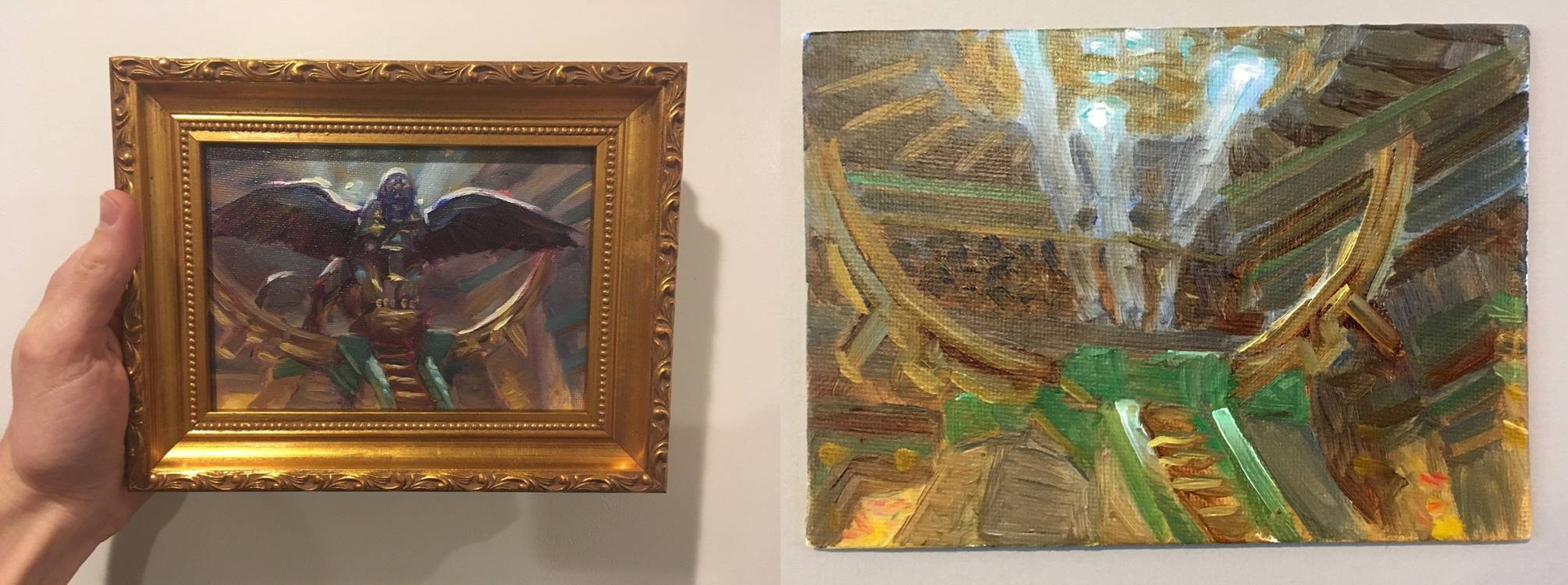
Color studies are some of my favorite things to collect and hang on my wall, and they tell such wonderful tales of the overall art story. This article will look at these two pieces of art both on their own and how they function in the greater timeline of creating the final painting. And who better to tell us about their process than the artist himself.
Creating Azor, the Lawbringer: A Pancoast Process
I was recently able to catch up with Ryan and find out exactly what went into creating Azor, and that’s where our article starts today. Below are his words and thoughts as he moved through each step, a rare opportunity to walkthrough a painting from conception to completion. Take it away Ryan!
Step 1: Thumbnails
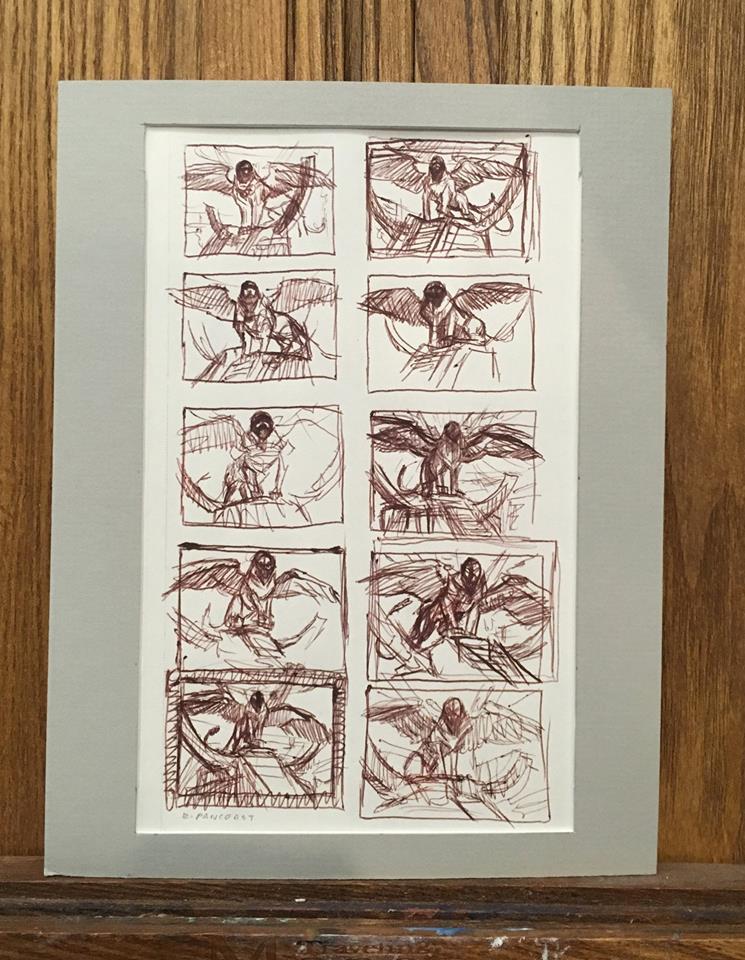
Azor, the Lawbringer (thumbnails) by Ryan Pancoast. Ballpoint pen on paper. Private collection.
“As usual, this is the first step and I do it using ballpoint pen so I can’t erase. Even bad ideas have merit, if only to show me what not to do. Eliminating the ability to erase ensures all my ideas are on paper.”
Step 2: Digital Sketch
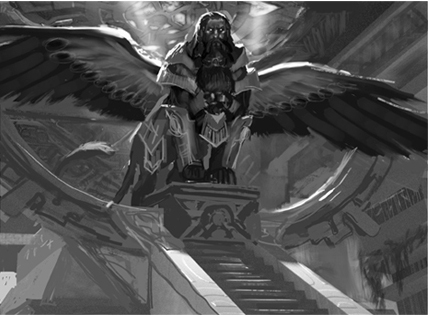
Azor, the Lawbringer (Rough Sketch) by Ryan Pancoast. Digital.
“I import the thumbnails I think have merit into my iPad and finish the sketches digitally. Often times I just work in grayscale so I can work on the values (light and dark) without worrying about color, which I can figure out using actual pigments.”
Step 3: Submit Sketches
“I submit the sketches to the Art Directors (in this case Cynthia Sheppard), and their preferred sketch is chosen.”
Step 4: Maquette
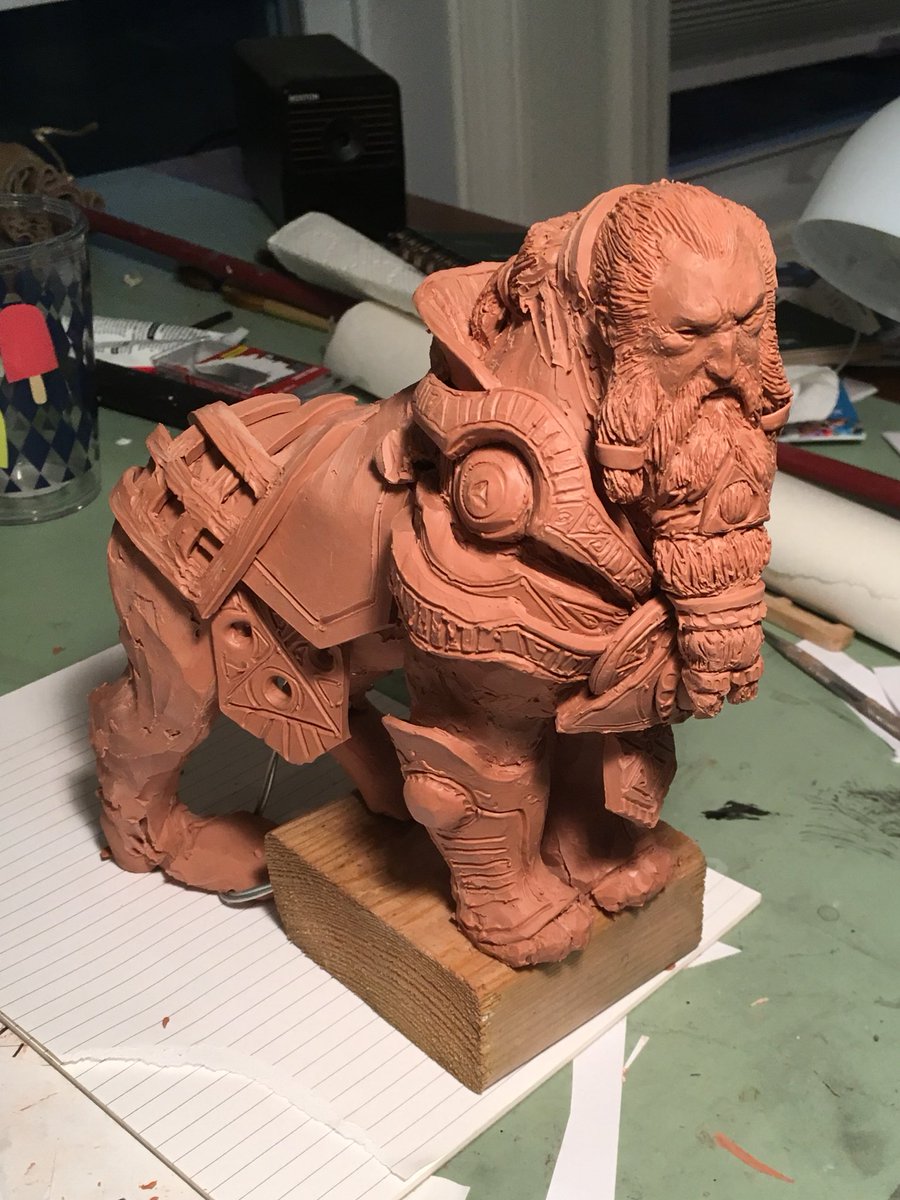
Azor, the Lawbringer Maquette by Ryan Pancoast. Collection of the artist.
“Now that I know which sketch to develop, I can safely gather photo reference, which in this case included the maquette. I built Azor based on the sketch, which allowed me to understand how his costuming would function around the sphinx’s peculiar anatomy.”
Step 5: Sun Temple 3D Model
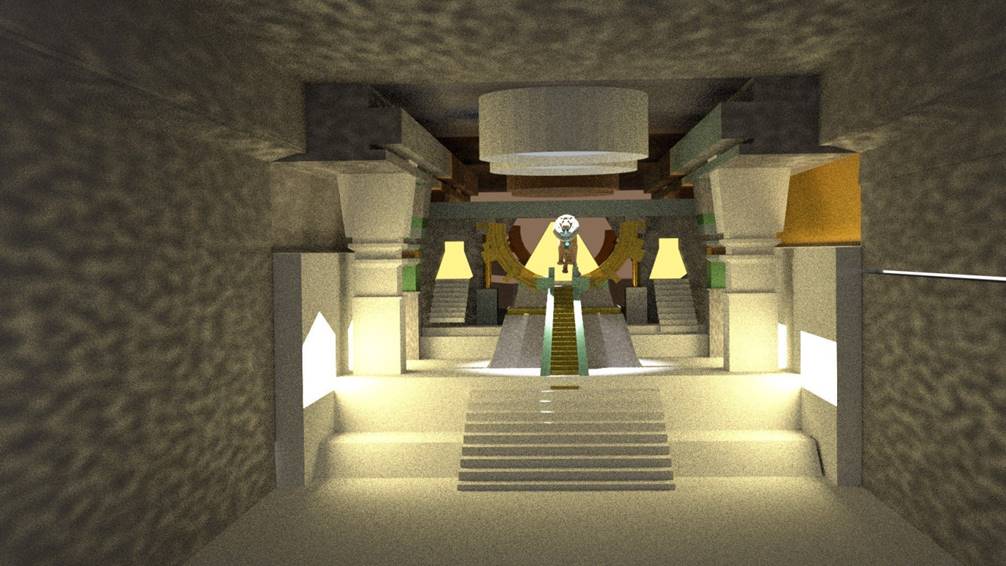
“I used a free program called Blender to build the interior of the Sun Temple based on concept art sent from HQ. I could light the scene appropriately and use a stand-in lion model to see how the light would behave on Azor’s body.”
Step 6: Photo Reference
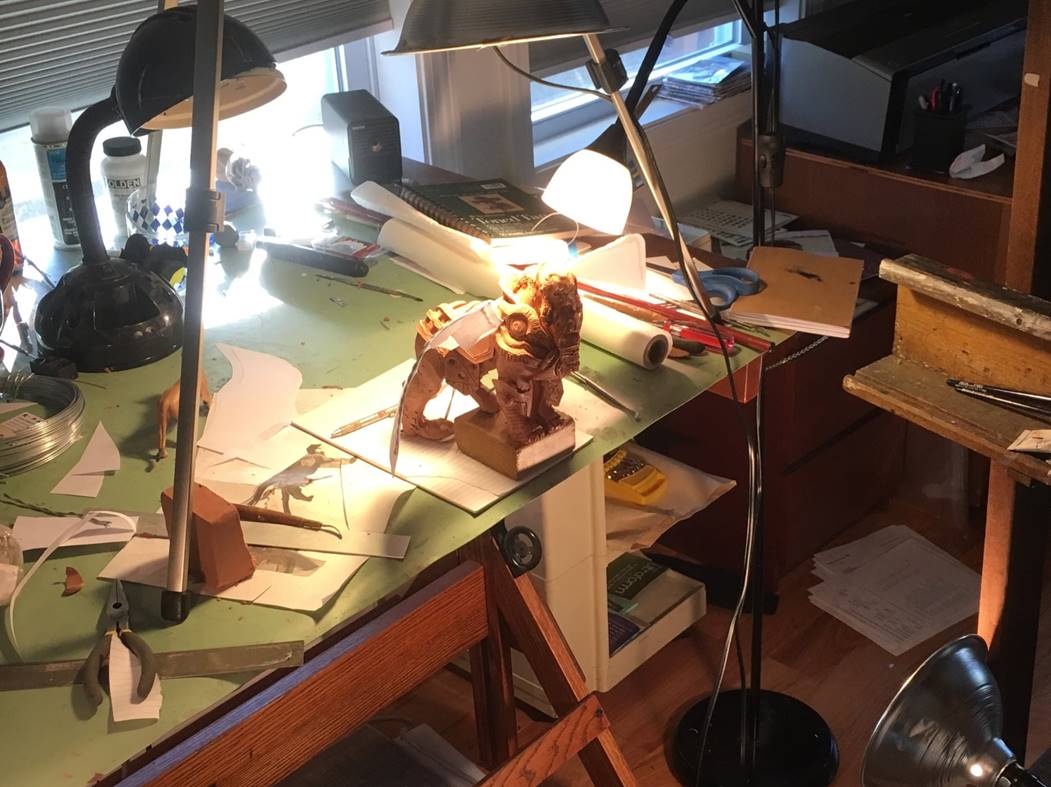
“Based on the scene created in Blender I could now photograph the sculpture from the correct angle and in the correct lighting.”
Step 7: Color Studies
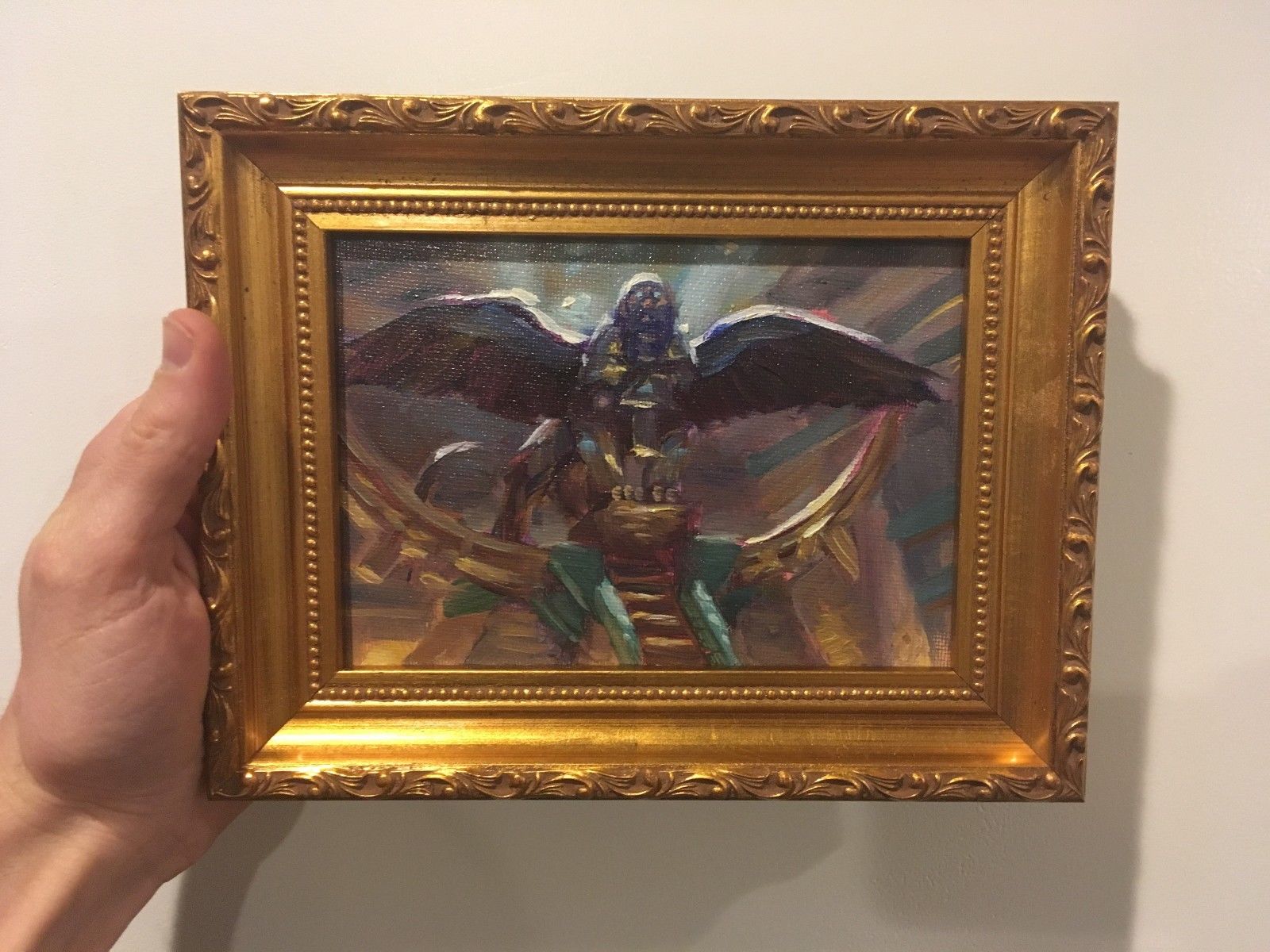
Color Study for Azor, the Lawbringer by Ryan Pancoast, oil on board, 5” x 7”
**Authors Note: Three color studies were made available for Azor; I purchased one, another sold on eBay, and the third Ryan donated to an MTG/ Puerto Rico charity event in Minneapolis.
“Since most of the preparatory work so far has been digital, I now have to move to actual paints to understand how physical pigments will behave. I try multiple times starting in different ways, e.g starting with warm color washes, starting with a cool color wash, going direct with color, etc. I can try different kinds of blue to see which is most appropriate, or find a green pigment that’s best for jade.”
Step 8: Sun Temple Color Study
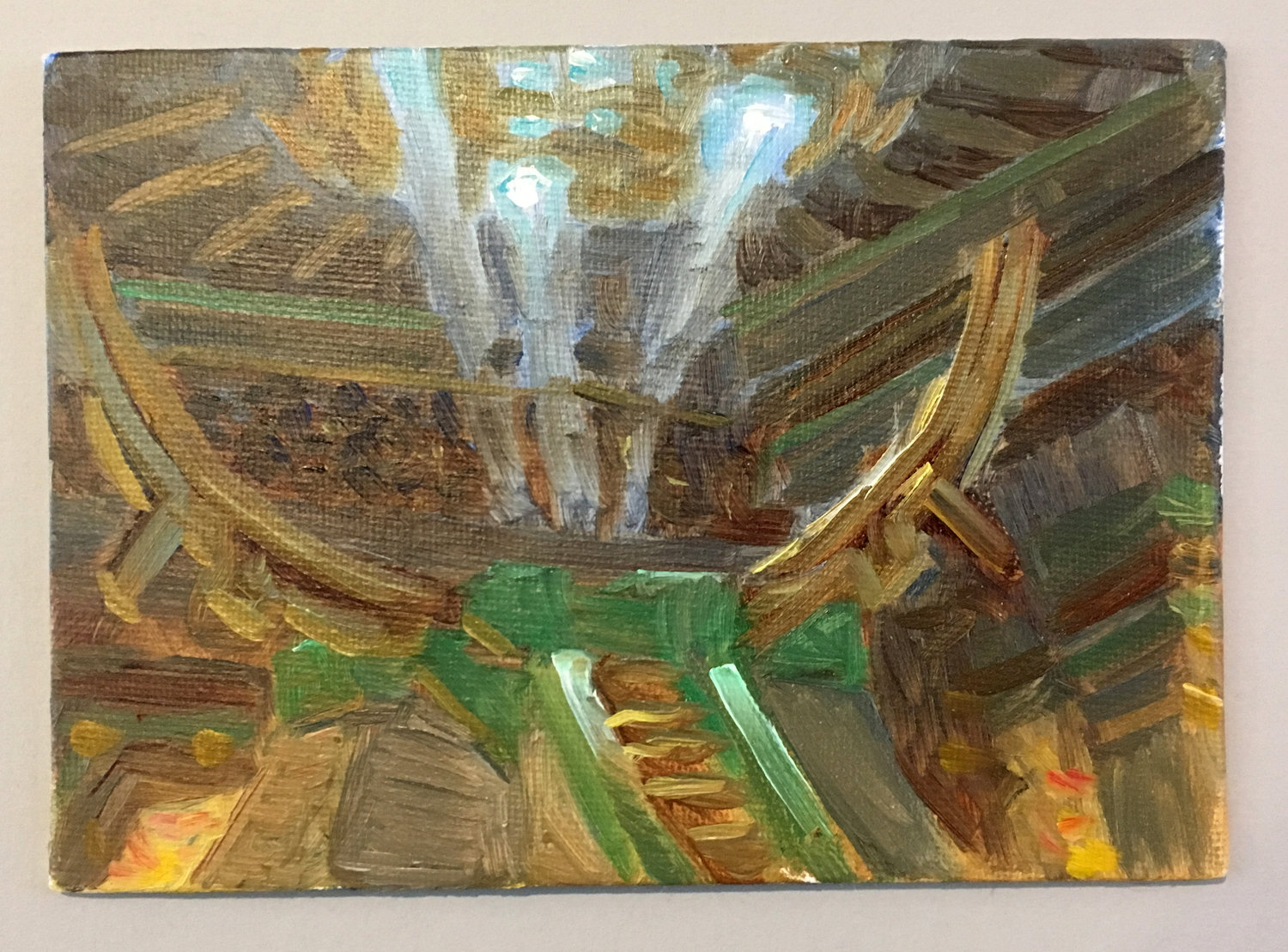
Sun Temple Color Study (for Azor, the Lawbringer) by Ryan Pancoast, oil on board, 5” x 7”
“This was an attempt to try out pigments without Azor in the scene. I figured if I could approach the illustration as a landscape scene I might be able to create a naturalistic feel, and then figure out how Azor would fit in.”
Step 9: Final Painting
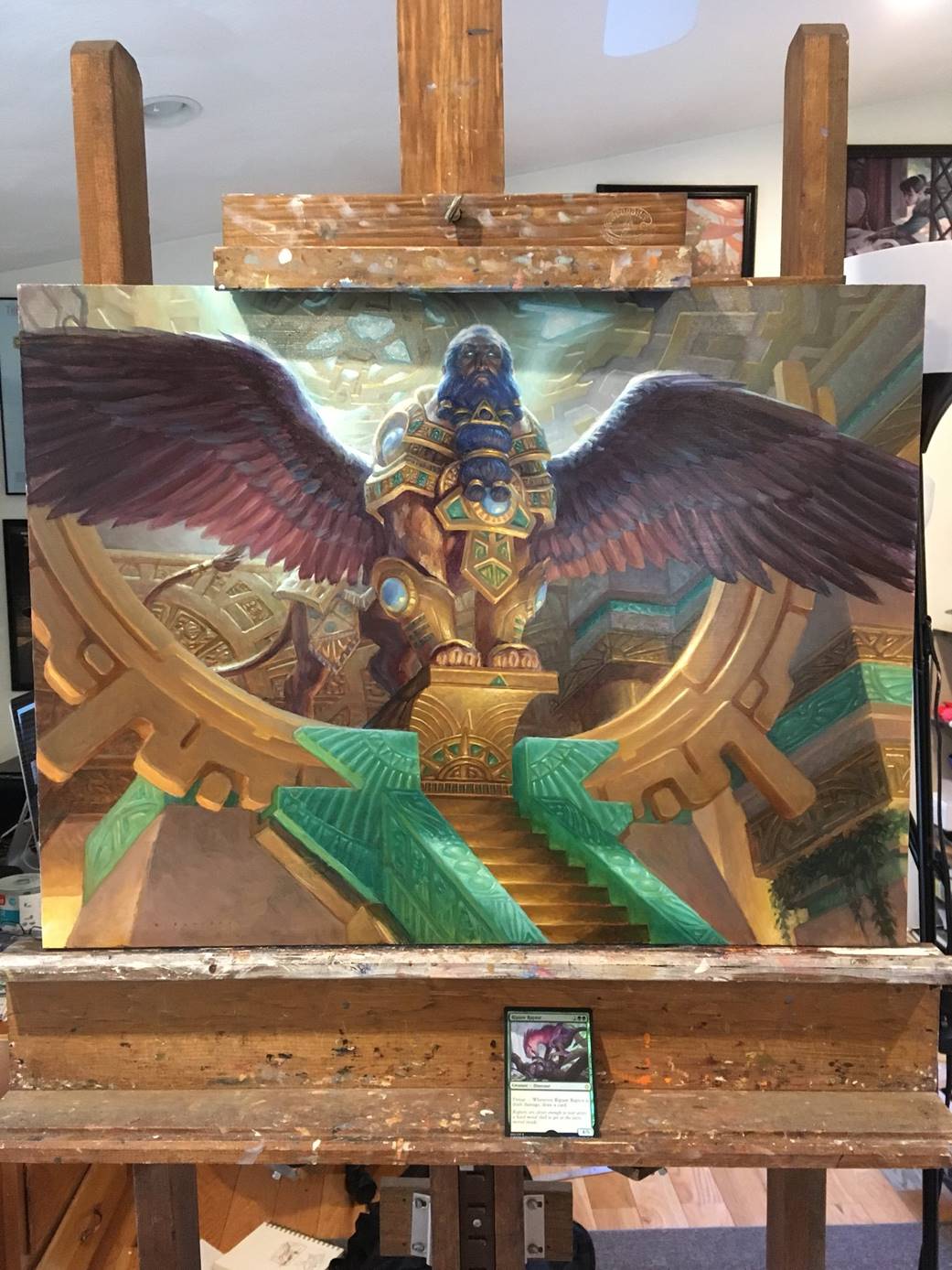
Azor the Lawbringer by Ryan Pancoast, oil on board, 18” x 24.” Sold on eBay for $5.175. Private Collection.
“Using all this prep work I could move to final, first doing the final drawing on board, light washes, then using the paint more thickly. This took a long time to do and I was constantly second-guessing myself, designing ornamentation as I went and often repainting whole sections. I keep the maquette in my studio on the off chance I get to paint Azor again.”
Why This Piece?
So now that we’ve seen how Azor came to be, the question becomes “Why I decided to add it to my collection?” It’s been a while since we’ve gone through one of these, but I still think it’s important to look at my Five Things to Consider When Buying Magic Art: Do You Love It, The Work, The Artist, The Card, and The Environment. For every piece I evaluate, I go through this list; it doesn’t have to strike me in every category, but the more high points it has on this list, the better fit it is for my collection.
Do You Love It?
Sphinxes are one of my favorite creature types in all of Magic, I really like Ryan Pancoast color studies, and this sphinx art is one of the best in the game. Of course I love it.
The Work & The Artist
At this point it goes without saying, but Ryan Pancoast is a phenomenal artist and I’m happy to add anything by his hand to my collection. End of story.
The Card
Azor is a legend, and as such can function as my General in Commander. While he didn’t make waves in any of the sealed or constructed formats, you can bet that I’m working on an Azorius Commander deck with the Lawbringer at the helm. I even picked up an artist proof card and had Ryan sketch me an Azor on the white-backed reverse.
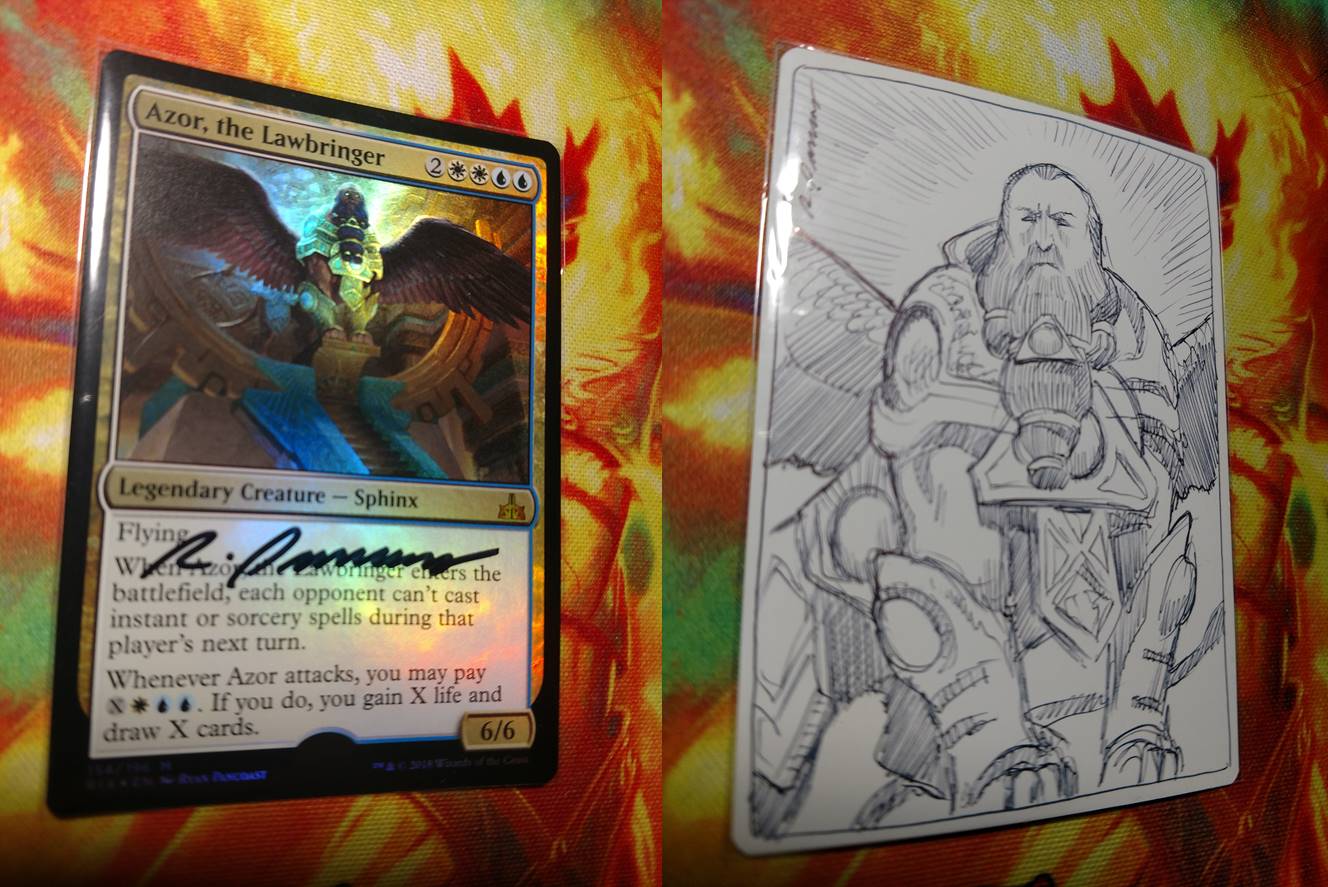
The Environment
Even though Azor didn’t have a huge impact on Constructed environments, he played a key role in the story of the block he appeared in, and we’ve since learned of his role in the history of the Multiverse as well. He’s the founder of the Azorius, Ugin’s sidekick, and responsible, both directly and indirectly, for most of what happened on Ixalan. I think he has another part to play in the coming storyline and that remains to be seen, but at any rate he’s reasonably important to Magic lore. I love when I can collect a piece that is an important part of the larger story, especially in such a dramatic way.
Put it on the Wall!
Framing has become one of my favorite parts of my art collecting journey, and this time was no different. The Azor color study came framed by Ryan, and I kept it in that frame until I purchased the Sun Temple color study a few months later. At that point it was off to Ain’t That a Frame to make them match!
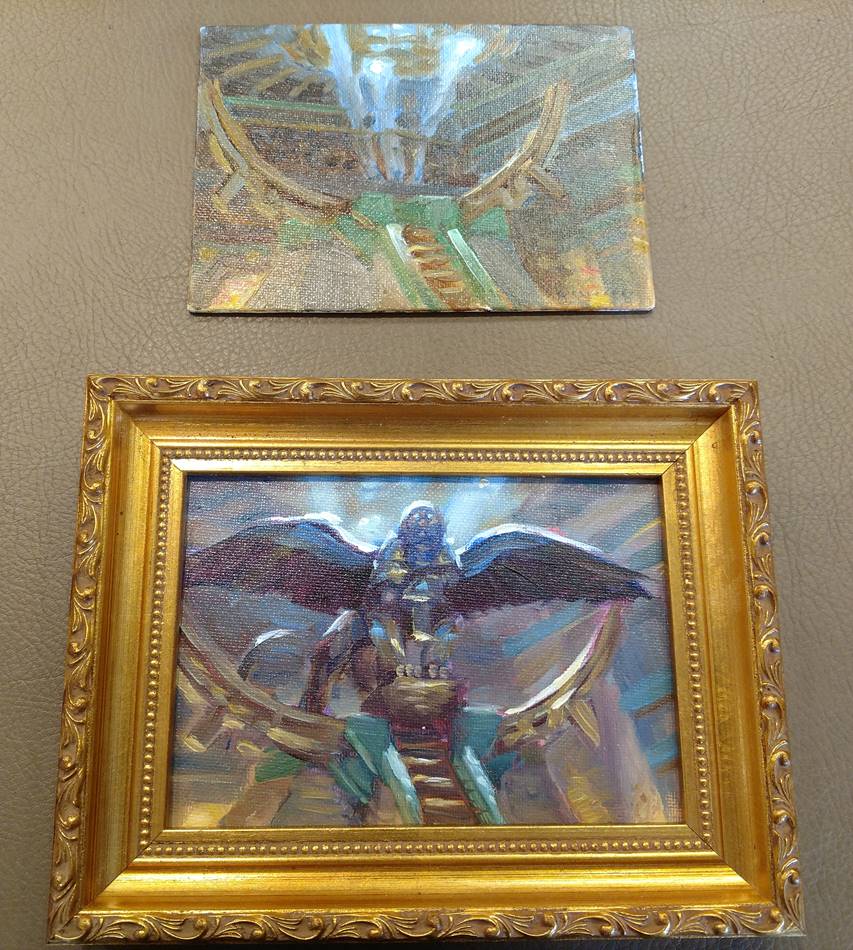
Nothing on the rack of ready-mades, those frames made from the leftover sections of other custom jobs, seemed suitable; so my framer Lou went to work as she does. She grabbed a couple of different options; the first pass was stacking two thinner frames, gold to bring out the temple and a worn black to bring it together.
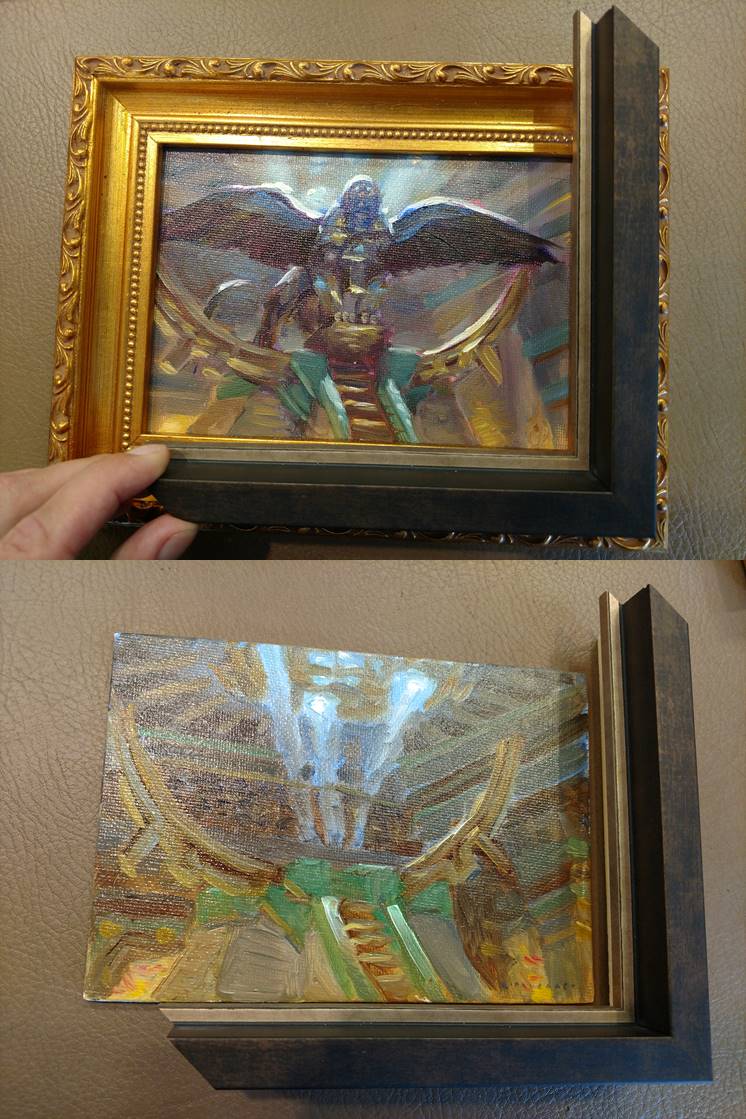
It was good, but too muted for the gleaming Azor, Parun of the Azorius. The next frame was similar but different, and in all the right ways.
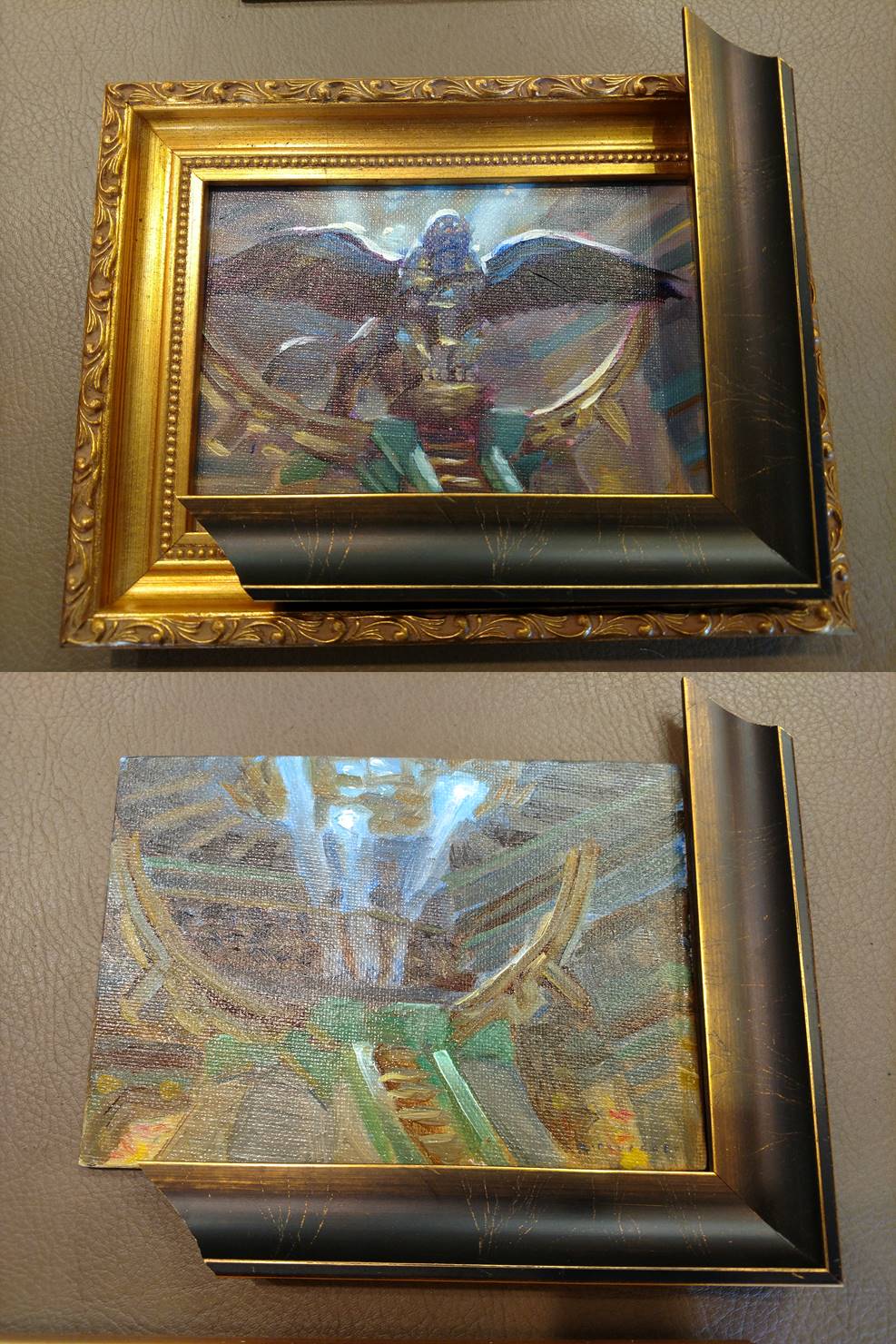
Still playing off the idea of gold and black, this frame had the patina I was looking for, reminiscent of shimmering gold of Orazca. It was clean yet the streaks that went from gold to black made it look weathered. It would be as if you were Breeches the Pirate Monkey, peering in a window of the Sun Temple to look upon its protector. It was perfect, and even more perfect was the fact that Lou had enough left-over from a past job that she could work them up at the “ready-made” price. She certainly wouldn’t have had to mention that at all, but it’s for reasons like this I’ll never frame anywhere else.
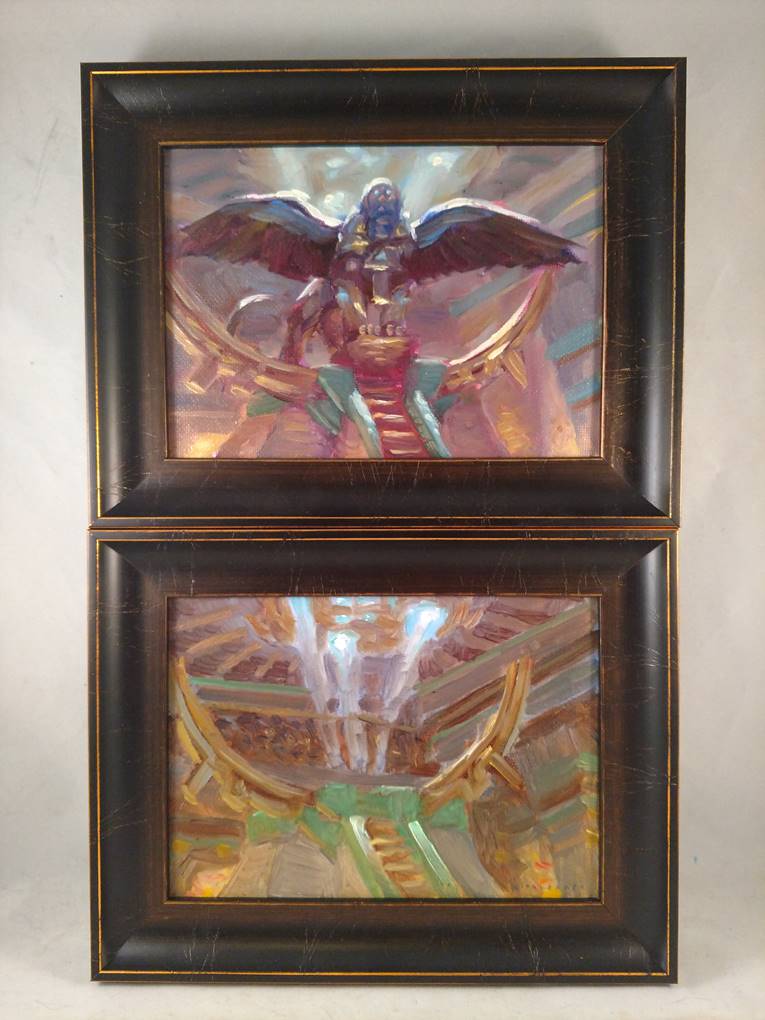
They came out beautifully, and became the first (but not the last) pieces of Azorius art I’ve added to my collection.
Build Your Collection
About the Artist
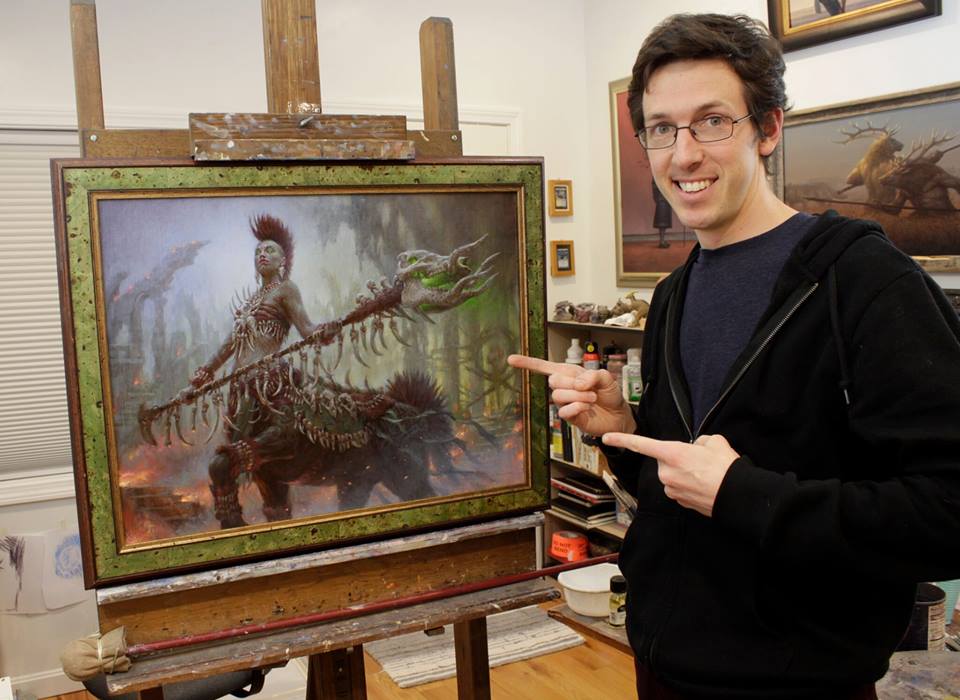
Ryan Pancoast with his newest painting for Ravnica Allegiance, Nikya of the Old Ways.
I’ve written about Ryan Pancoast in the Mirror Gallery before, for work of his I’ve collected as well as his Vintage Artist Constructed deck. I always like to add something special about each artist when I write about their work; previously I’ve explored his catalogue of professional awards, from Spectrum inclusion to the Chesley Award nomination, as well as his personal project Frontier Fantasy. Today I want to talk about his videos on Gumroad and YouTube. For many of Ryan’s paintings and especially his later Magic work, there is a quick time-lapse YouTube video, like this one for Azor:
This is a condensed version of his painting of the final work set to some sweet music, and it is really fun to watch the Parun come together in ten minutes.
If you really enjoyed the walkthrough format of this article, I’d encourage you to check out his Gumroad store.
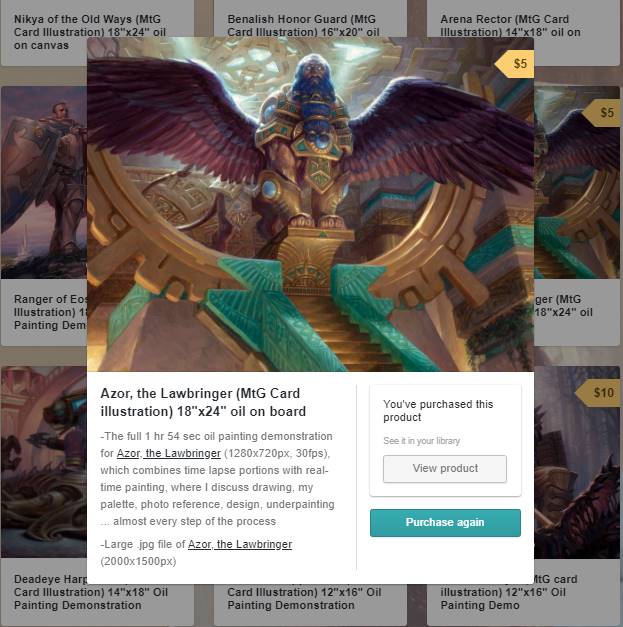
For as much as I enjoy his work I hadn’t previously bought one of his videos. So I grabbed this one, and as I was writing I had it up on the other screen. It’s interesting and insightful, eye-opening and exciting, and I highly recommend you check them out for yourself. Ryan is one of the only MTG artists providing this level of detail in documenting his work and process, and it’s such a treat to be able to watch.
Wrapping Up
I hope you all enjoyed this behind the scenes visit to Ryan’s painting process. It never ceases to amaze me the amount of thought that goes into Magic illustrations, whether I’m looking at the 2” by 3” card box, the 5” by 7” color study, or the 18” by 24” painting in real life. All the decisions the artist makes, from adding another preliminary step to the tiniest brushstrokes, have incredible ripple effects into creating the final image we as players see. I love being able to magnify that process and detail for a larger audience, and I hope you found it as fascinating as I did.
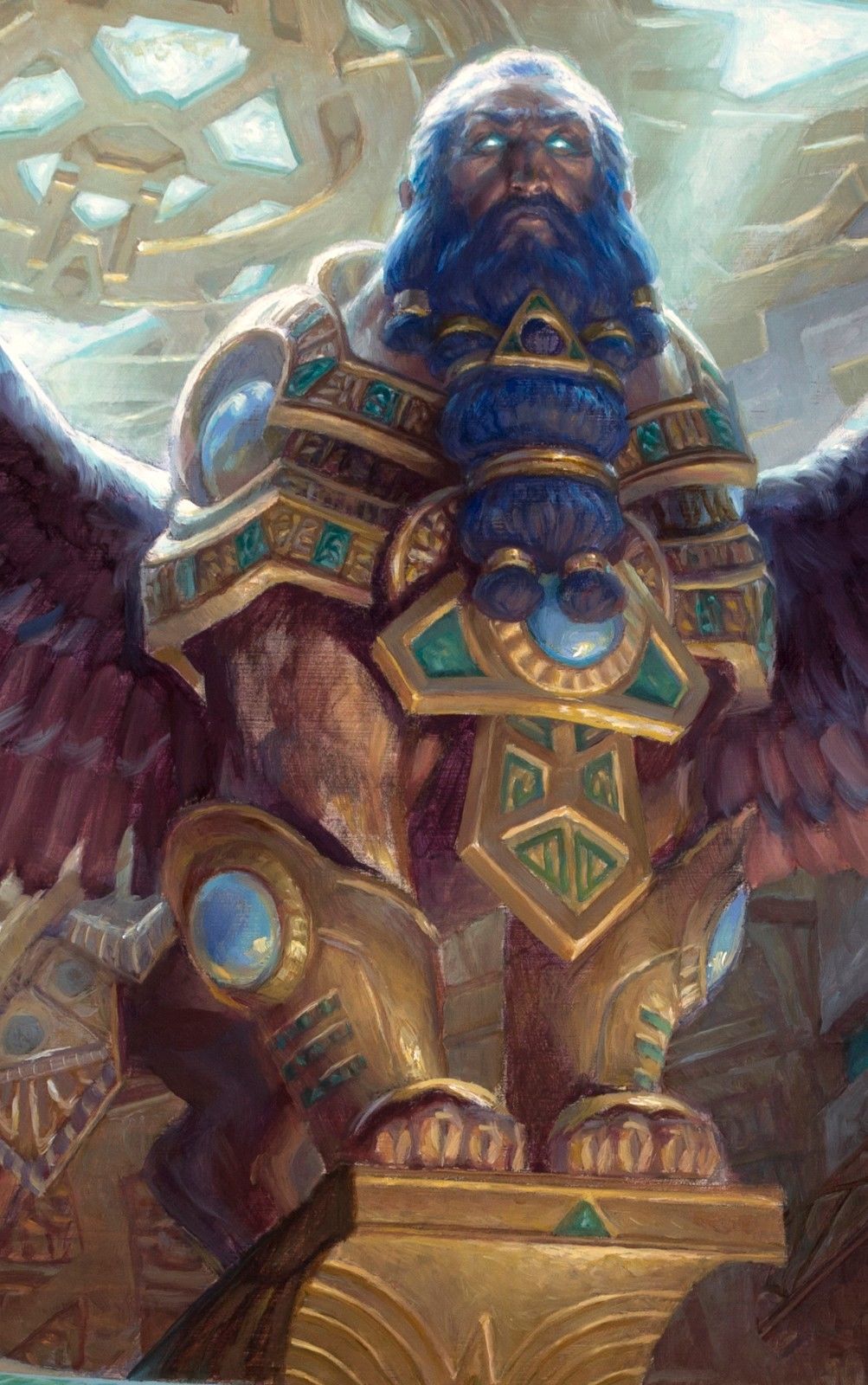
Taking a peek at February, I’ll be doing an article where I take the reins as an Art Director, there will be more Magic artist interviews, and there is also a special Valentine’s Day edition of The Mirror Gallery coming up! And make sure you stay tuned into next week for more Art Market Minutes as paintings and sketches from Ravnica Allegiance continue to find their way into new collections.
Remember, to see original #mtgart and other #vorthos related things, follow me on Twitter. Feel free to ask questions or retweet to continue the conversation. Thanks and see you next time!
Donny Caltrider has been playing Magic since 2002 and collecting original Magic art since 2017. He has an M.A. in Museum Studies from Johns Hopkins University and enjoys telling stories about art, objects, and the intersection of fantasy with real-life. You can find him on Twitter talking about #mtgart, museums, and other #vorthos related goodness. Follow along and continue the conversation!

